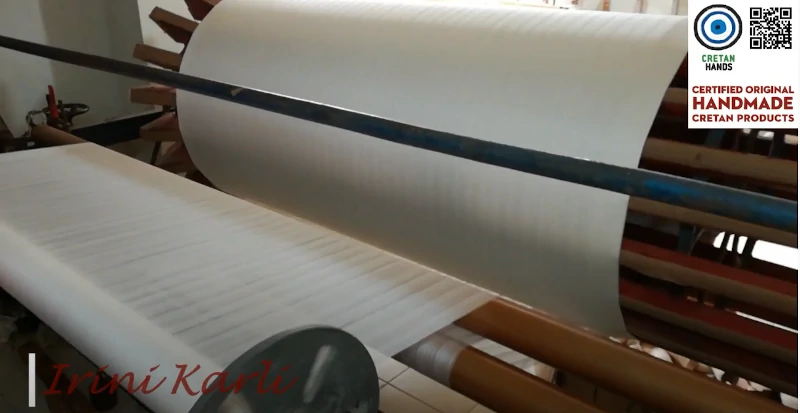Weaving is an area of handicraft that Crete has shown a long tradition.
Historically, the art of weaving appears during the Neolithic period, meeting man’s basic need for clothing.
In ancient times , the goddess Athena was considered the patroness and teacher of weaving.
From mythical times , the myth of Ariadne is known as well as the woven costumes of Minoan women , as depicted in the frescoes of Knossos.
In Homeric times, weaving appears to have been the main occupation of Penelope, where every night she would weave and in the morning she would weave, thus avoiding the pressures of suitors.
But the greatest flourishing of weaving occurs during the Byzantine period. The manufacture of bedclothes, garments, priestly amphorae and the costumes of emperors and ladies of the time were mainly weaving works.
In Crete, weaving is an art that has been passed down from generation to generation. Weavers were handed down from mother to daughter in order for the younger one to make her dowry.
The past meets the present in order for the future to move forward.
Dowry weaving is no longer done by the girls , but there are several artistic creations in clothes, carpets, bags and many other imaginative creations.
Nowadays old looms still survive , rebuilt if necessary to make them functional and are increasingly used to preserve this precious art of weaving.
Our company has been engaged since 1979 in the manufacture of wooden hand looms, one of the few that still exist in Crete, making and reconstructing old traditional looms, while maintaining the craft where we produce bags, carpets, traditional Cretan woven fabrics (towels, tablecloths etc.).





